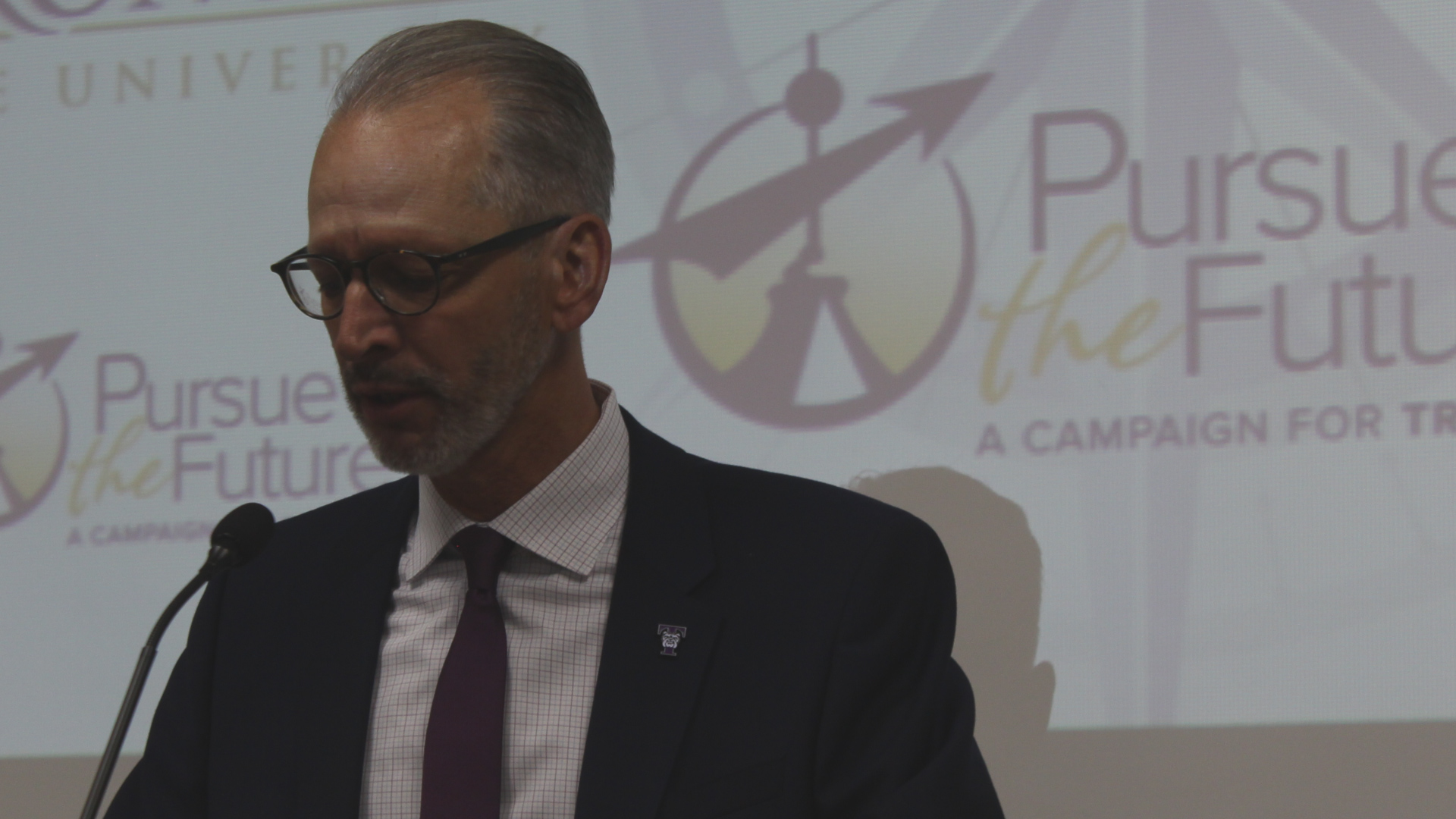
Truman State’s Pursue the Future campaign is past the halfway mark of its fundraising goal weeks after its formal announcement of the campaign’s public phase.
The campaign, announced Oct. 9, has been active since July 2013 during what is called the quiet phase, in which $24 million was raised in large donations, and will end June 30, 2018.
University President Troy Paino says the campaign has raised $25.8 million of its $40 million goal, including a $7 million donation by Dan and Jan Shepherd. He says the campaign’s top priority is scholarships, and the campaign is aiming to prioritize $25 million toward university scholarships.
“For us, it goes back to access and student support. That has been, and will be for the foreseeable future, our top priority. It’s also the most appealing thing to our donors. They’re less interested in brick and mortar, building a statue, things like that — they really want it to go to students.”
– President Troy Paino
Paino also says he plans to increase employee salaries by moving budgeted money from scholarships to salaries when more scholarship money is available from the campaign. He says not all of the almost $25.8 million received so far is currently available for use — many gifts are deferred or pledged over time — but at least 45 new scholarship funds already have been created. He says most gifts include usage provisions by the donor. If scholarship provisions are extremely restrictive, a qualifying student cannot always be found, and the money cannot be used, Paino says.
“Every once in a while, someone gives us an unrestricted gift, which we can use for whatever we determine the highest need is,” Paino says. “Usually those come through estate gifts. That’s a really small percentage of what we get but most donors want their money to be spent, so we try to make them aware that we want to establish the criteria broadly enough to where the money is going to be spent.”
Paino says this is Truman’s second comprehensive campaign, the first of which was a $30 million campaign that ended during 2011. He says Truman is functioning more like a private university than it used to because dwindling state funds during the last 10-15 years have created a higher need for fundraising.
Mark Gambaiana, vice president for university advancement, says student debt is an emerging crisis in the U.S., and Truman is not an exception.
“Student debt has replaced credit card debt as the second largest family finance burden behind mortgages,” Gambaiana says. “Students graduate Truman with an average debt of $25,000.”
Gambaiana says this figure especially is significant because half of Truman graduates go to graduate school. He says student debt might partly account for the trend of reduction in the number of alumni giving back to Truman he’s seen throughout the last 20 years, which is part of a nationwide trend of reduced donors.
“Frankly, it’s the one thing keeping me up at night,” Gambaiana says.
To read more from Truman’s campaign chair check out Issuu.
